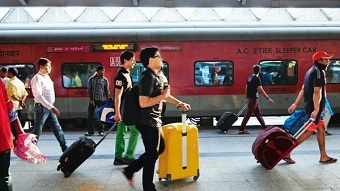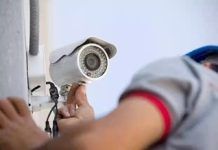Indian Railways in an effort to improve the overall security of the passengers travelling in the trains has decided to install smart cameras in its premises. Railways has said in a statement that it has begun the process of installing Internet Protocol (IP) based Video Surveillance System (VSS) at stations, that is, waiting halls, reservation counters, parking areas, main entrance/ exit, platforms, foot over bridges, booking offices etc.
Railway Board has approved works for provision of Video Surveillance System covering 983 stations over Indian Railways under Nirbhaya funds. This year a budget of Rs. 250 crore was allotted to Indian Railways from Nirbhaya fund for installation of video surveillance system. Railways have entrusted RailTel, a Miniratna PSU under Ministry of Railways with the work of providing IP based VSS with video analytics and facial recognition system. To have a better coverage and clearer image, four types of Full HD Cameras – Dome type (for indoor areas), Bullet type (for platforms), Pan Tilt Zoom type (for parking areas) and Ultra HD- 4k cameras (for crucial locations) are being provided.
CCTV camera live feeds are displayed on multiple screens at the Railway Protection Force (RPF) control room for monitoring. Each HD camera at the station consumes approximately 1TB of data and 4k camera consumes 4 TB data per month. The recording of the video feeds from CCTV cameras will be stored for 30 days for playback, post event analysis and for investigation purposes. Important videos can be stored for longer duration.
Talking about the project of providing Video Surveillance System, Shri Puneet Chawla, Chairman and Managing Director, RailTel said that in the first phase, VSS is being installed at 200 stations pan India and as on date work has been completed at 81 stations. The Video Surveillance System will be extended to other stations and coaches soon. The work is being done utilizing the Nirbhaya fund for ensuring better safety for women.








